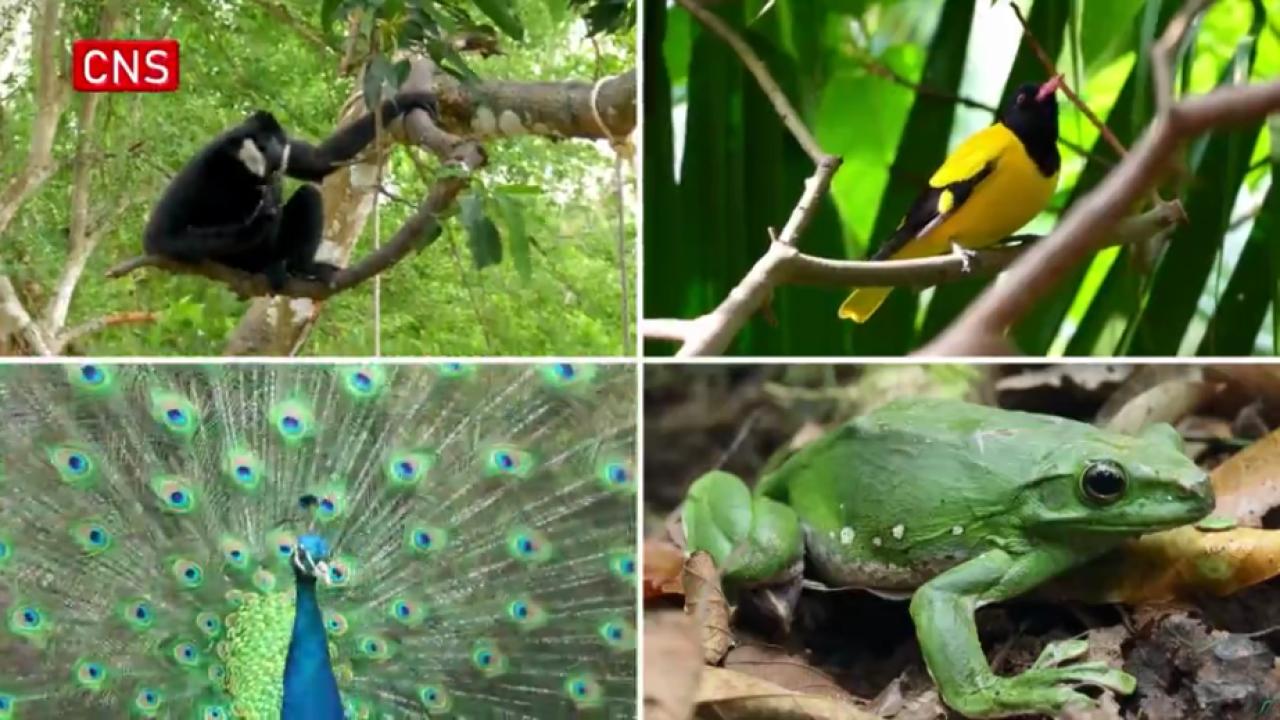
Pharmacists package drugs to treat fever and relieve pain at a community health service center in Shanghai's Huangpu district on Tuesday. (LIU YING/XINHUA)
Chinese scientists have discovered the mechanism behind the convergent evolution of the Omicron strains of COVID-19, a feat that could help researchers develop broad-spectrum COVID-19 vaccines and drugs, according to a study published in the journal Nature on Monday.
Convergent evolution is the phenomenon in which different species of an organism independently evolve similar traits in response to shared selective pressures. Scientists suspect this may be one of the reasons that so many Omicron subvariants exhibit high levels of immunity escape, causing breakthrough infections.
The Omicron family of viral strains is rapidly evolving. However, despite divergent evolutionary paths for Omicron subvariants, mutations on the receptor-binding domain of their spike protein, which acts as the key for the virus to enter cells, actually converge at several hot spots, according to the study by scientists from Peking University.
"We demonstrate that these convergent mutations can cause striking evasion of neutralizing antibody drugs and convalescent plasma, including those from BA.5 breakthrough infection, while maintaining sufficient ACE2 binding capability," the researchers wrote.
The most antibody-evasive strains tested, BQ.1.1.10, BA.4.6.3, XBB, and CH.1.1, are all Omicron offshoots. XBB and another strain, BQ.1.1, are driving up new cases worldwide, including in the United States, Europe and Asia.
The researchers also found that XBB and BQ.1.1 exhibited the most resistance to existing monoclonal neutralizing antibody treatments among the tested variants.
The newly emerged CH.1.1 variant has the international scientific community concerned, since it carries the Delta variant's signature P681R mutation. This means it is potentially more pathogenic, though more research is needed to confirm its virulence.
In the study, scientists identified SA55 and SA58, a pair of neutralizing antibodies that have promising levels of neutralizing efficacy against multiple Omicron subvariants. However, SA58 is relatively less effective against the BJ.1/XBB and BA.2.75 strains.
SA55 is the only neutralizing antibody demonstrating high potency against all tested Omicron subvariants. The SA55 SA58 antibody cocktail is still in preclinical development.
"These results suggest current herd immunity and BA.5 vaccine boosters may not efficiently prevent the infection of Omicron convergent variants," the study concludes.
Qi Hai, a medical professor at Tsinghua University, said the work analyzed multiple Omicron strains and examined how they escape herd immunity. This will allow scientists to craft new models to more accurately predict how the virus could evolve in the future.
He said it also enables researchers to more efficiently create broad-spectrum COVID-19 vaccines and drugs.
Wang Xiangxi, a researcher at the Chinese Academy of Sciences' Institute of Biophysics, said the findings will enable scientists to predict and prepare for emerging Omicron subvariants, which will save valuable resources and time in future epidemic prevention and control efforts.


















































 京公网安备 11010202009201号
京公网安备 11010202009201号